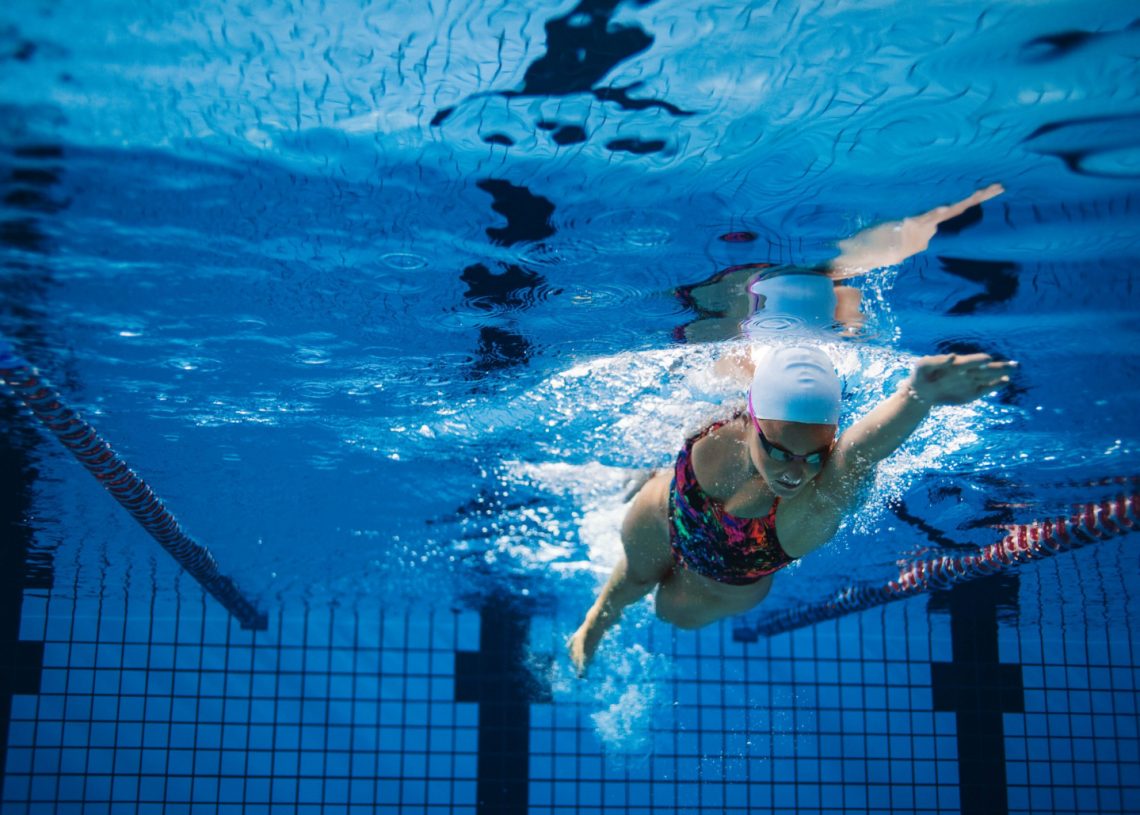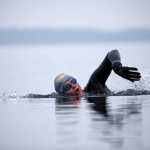
How do I stop feeling dizzy when swimming?
Dizziness is a common issue with swimmers who are transitioning to front crawl, but how can you adjust your head position and stroke to make sure it doesn’t impact your experience? Swimming coach and Olympian Cassie Patten shares her advice.
“I have registered for my first mass participation swim in September. It’s a 2-mile lake swim in the Serpentine, London. I have started to swim using front crawl, I used to only swim breaststroke. I have noticed I don’t like putting my face in the water and I find swimming front crawl makes me very dizzy if I do it for long periods. I want to get better but the dizziness is stopping me. I swim both in the pool and in my local sailing lake. Without seeing me what do you think I can do to get better? Any help will be appreciated.”
Liza Coles
Breathing and rotation
I love helping people achieve their goals. I will be at the event in September, too. It’s a great event and I’m sure you will love it. What you are experiencing is very common with swimmers who are transitioning to swimming front crawl.
I always explain to my swimmers that we are land mammals and when we take a breath close to the water our survival instincts kick in and make us not want to put our mouth in and maybe inhale water. What we need to do is calm that inner instinct by slowly introducing the action of breathing in a safe and controlled manner. What I get my swimmers to do is to start on the side of the swimming pool, put both feet on the floor and one hand on the wall. Slowly lower your face into the water and start blowing bubbles and therefore exhaling. To start with when you need to inhale, lift your face up and take a controlled breath. Repeat this until you feel comfortable with this action.
The next step is to add a rotation element to the breathing. Keeping your feet on the floor, place one hand on the wall. With the other hand allow it to move down by the hip you were going to turn your head to breathe too. This time when you put your face in the water, try to ensure your nose is pointing towards the floor, you don’t want your entire head to be submerged just your face up to your ears. When you need to inhale, gently rotate your head to the side, so your cheek and ear are still in level with the water, but your mouth is clear. Gently take an breath in here and then rotate your face back down to the bottom again. This is a great drill to do as it mimics the action of breathing while swimming front crawl. It doesn’t matter how many times you do this; I say to my swimmers the more relaxed you become breathing like this the easier it will be to do when moving.
Grab a kickboard
There are a couple of steps you can do to put this into a moving action. The first one is to pop some fins on and grab a kickboard. Replicate the action you’ve been doing at the wall, but add a little bit of movement through the use of your legs kicking. When you feel comfortable with this you can continue with one arm on the kickboard and use the other to include an arm action. There is no timer on this, you can practise for as long as you need to feel comfortable with breathing in and around the water.
When you feel ready you can leave the kickboard at the side and put the actions together into full stroke. Do not feel like you need to rush this, even if you swim a few metres at a time, then stop and rest. Repeating this in a non-stressed environment at first will assist in removing any anxiety around breathing in the water.
Keep your head as neutral as possible
Another thing to think about when you are turning to breathe is keeping your head as neutral as possible. Let me explain what I mean by this: imagine you have a javelin down the top of your head, neck and spine (so I’ve turned you into a swimmer kebab). This is your centre line, all action comes from around this line. When you’re breathing you want to make sure your head stays in line with your neck and spine and doesn’t lift, drop or move side to side from the centre line too much.
If you watch the video I have linked to at the end bottom of this article, you will see what I mean. This video is me swimming a few years ago, and as you can see the movement of my head is minimal, it just rotates, I take a breath and then rotate back again. This assists in removing any unwanted movement and should stop you feeling so dizzy. I hope this helps, and please do say hello to me in September, I will be at the start line on the microphone.
Watch Olympic Medallist demonstrating front crawl technique. Read more advice from Coach Cassie.








